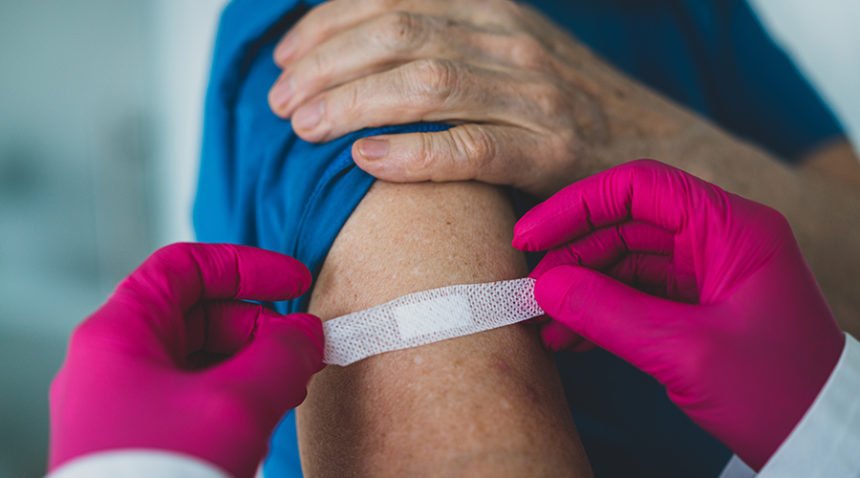As more and more people get vaccinated against COVID-19, the question on all our minds is: How much longer will this pandemic last? A popular idea is that in the coming months, we’ll achieve herd immunity and life can go back to normal.
Herd immunity (many prefer the more humanizing term “community immunity”) is the concept that if a sufficient proportion of a population is immune to a virus through vaccination or prior infection, the virus is less likely to spread from person to person.
Achieving herd immunity for COVID-19 is possible but threatened if we are not vaccinating our population fast enough to outpace the spread of more infectious COVID-19 variants, says UNC Health infectious diseases specialist David A. Wohl, MD.
“Our concept of community immunity needs to shift,” Dr. Wohl says. “When we talked about community immunity before, we were talking about it against one dominant virus. Now we have to think not only do we need large-scale immunity against the predominant virus that was circulating most of last year, we now need the population to be largely immune to the circulating UK variant (B.1.1.7) and, more importantly, variants identified in South Africa and Brazil.”
The Race Against the Variants
Herd immunity is generally achievable only with high vaccination rates, which have not yet been attained, even with millions of Americans getting vaccinated every day.
“We finally have widespread vaccination rates right this moment, which is what we need because our vaccines do offer a good measure of protection against these variants,” Dr. Wohl says. “But will this be enough?”
It’s helpful to think of it as a race between widespread vaccination and the more infectious and quick-spreading variants, he adds. “If we cannot vaccinate enough people or enough people refuse, we could see the variants win,” he says. “But if we are able to shut this down because so many of us are protected, then we win, and the variants don’t gain a foothold. Michigan, where there has been a surge of cases and hospitalizations, is an example of a place where variants are winning.”
What You Can Do Once You’re Vaccinated
While the variants may be a formidable foe to achieving community immunity, there are things you can do once you’re fully vaccinated. (Full vaccination happens two weeks after your second dose of a two-dose vaccine, Pfizer or Moderna, or two weeks after the single-dose Johnson & Johnson vaccine.)
Once fully vaccinated, you can do the following in a private setting, such as your home:
- Visit with other fully vaccinated people indoors without wearing masks.
- Visit with unvaccinated people from one other household without wearing masks, as long as they are considered at low risk for severe COVID-19 symptoms.
Until everyone can get a shot, it is still important to avoid medium and large gatherings and to follow safety guidelines in public. This means you should continue to wear masks consistently in all settings and stay physically distanced, especially when you’re not able to wear a mask (e.g., when eating and drinking). While the data indicate that vaccines provide protection from infection with the virus, this protection is not perfect and some vaccinated people can become infected—perhaps without experiencing any symptoms—and spread the virus to others.
“We can have our cake and eat it, too,” Dr. Wohl says. “There are things we can do, but we have to be really careful and grown-up enough to follow rules to protect each other so we don’t have to all take a timeout again and have a lockdown.”
For example, if you plan to travel, wear a mask whenever you’re indoors, such as in the airport or on the plane, and when you’re close to other people.
“In the societies that coalesced and followed these rules, things went really well,” Dr. Wohl says.
Visit yourshot.org for the latest information on the COVID-19 vaccines.

